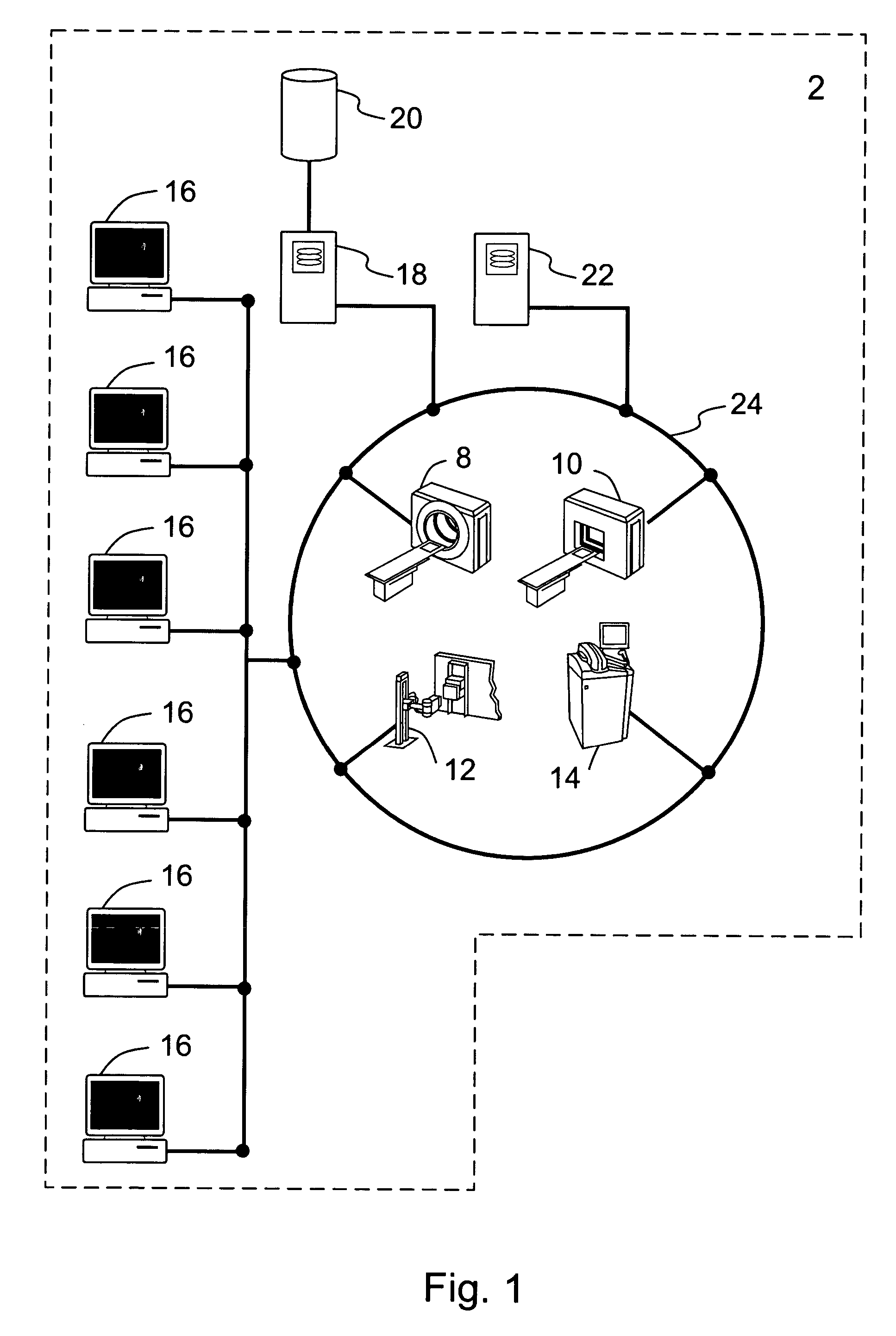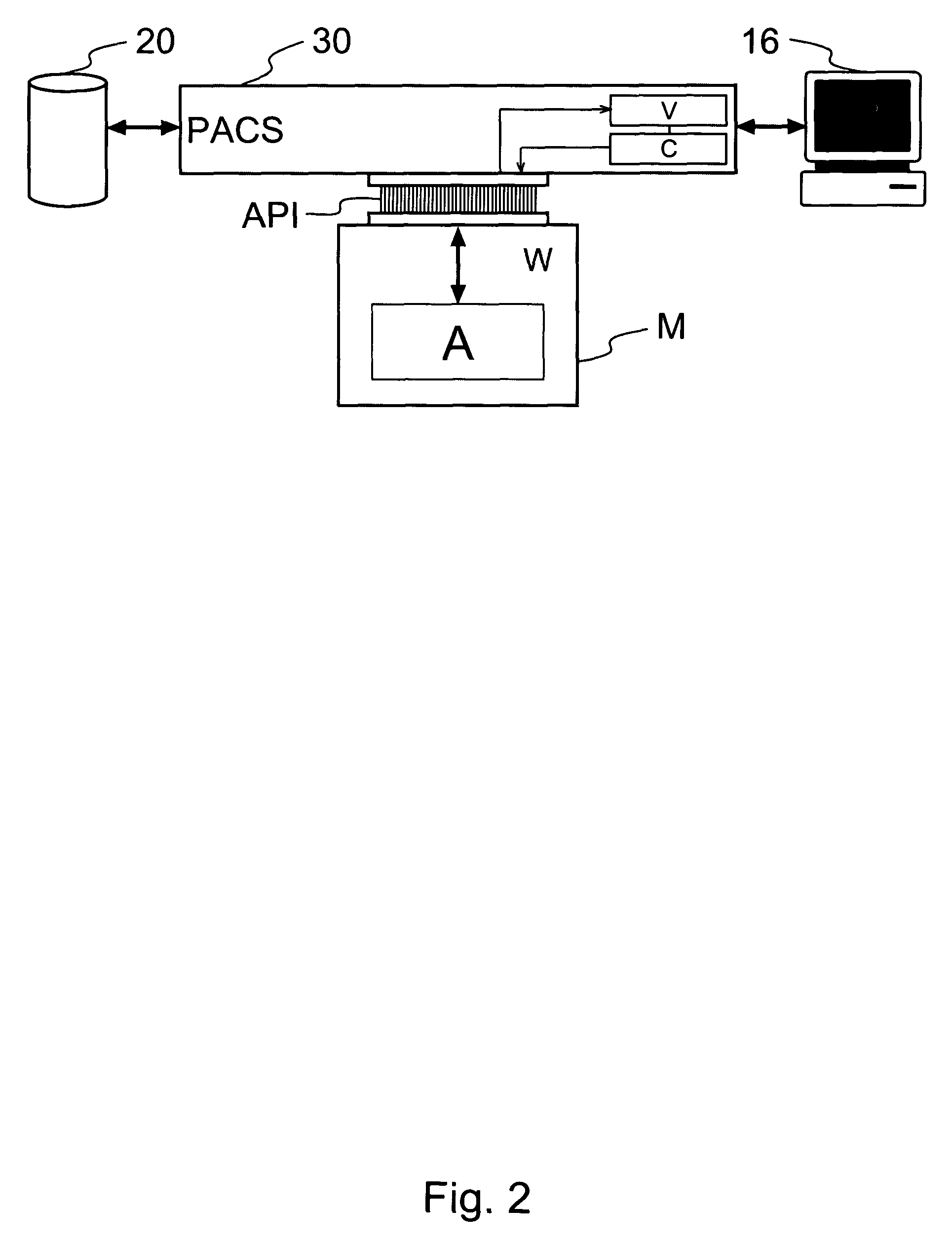Flexible integration of software applications in a network environment
- Summary
- Abstract
- Description
- Claims
- Application Information
AI Technical Summary
Benefits of technology
Problems solved by technology
Method used
Image
Examples
second embodiment
[0057]FIG. 4 schematically shows how a pre-existing 3D visualization application can be integrated into a PACS network similar to that of FIG. 2, but which differs from generally accepted software practices of medical imaging, for example the use of the DICOM standard as an image format, according to the invention. It is not uncommon for PACS network providers to depart from generally accepted software practices in implementations of a PACS network. For example, a PACS provider may employ a proprietary data compression algorithm for storing data. This can make it difficult for an application provider to supply a generic model component which can be integrated into all PACS networks in accordance with the schemes described above. However, there are several benefits associated with having to maintain only a single model component, for example ease of maintenance and guaranteed functional consistency across different implementations. This means it is not generally desirable for an appl...
third embodiment
[0058]FIG. 5 schematically shows a way in which a number of different pre-existing software applications can be integrated into a PACS network according to the invention. Many of the features of FIG. 5 are similar to and will be understood from the corresponding features of FIG. 3. However, whereas in the scheme shown in FIG. 3 the different model components are independently integrated into the PACS network, in the scheme shown in FIG. 5, the different model components M1-M3 are integrated via a dispatcher 40. The PACS network includes a single controller component C and a single view component V. A user wishing to perform a particular function on a particular type of data selects which of the model components to invoke. In an alternative scheme, a user simply identifies which data he wishes to view, and the dispatcher is configured to invoke the most appropriate model component, for example based on which imaging modality created the data, whether the data represent a 2D or 3D ima...
PUM
 Login to View More
Login to View More Abstract
Description
Claims
Application Information
 Login to View More
Login to View More - R&D
- Intellectual Property
- Life Sciences
- Materials
- Tech Scout
- Unparalleled Data Quality
- Higher Quality Content
- 60% Fewer Hallucinations
Browse by: Latest US Patents, China's latest patents, Technical Efficacy Thesaurus, Application Domain, Technology Topic, Popular Technical Reports.
© 2025 PatSnap. All rights reserved.Legal|Privacy policy|Modern Slavery Act Transparency Statement|Sitemap|About US| Contact US: help@patsnap.com



